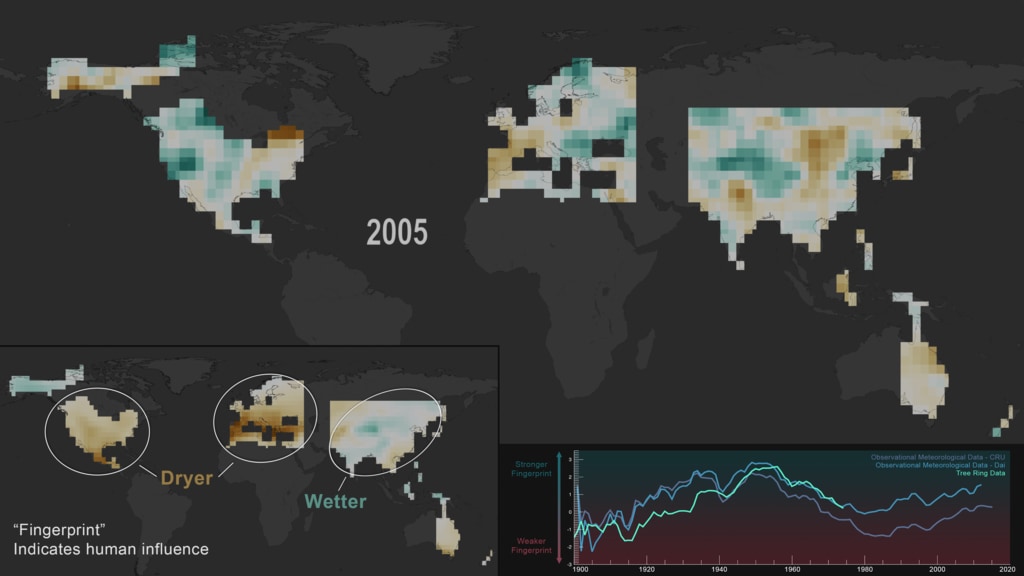Human Influence on Global Droughts Goes Back 100 Years
Human-generated greenhouse gases and atmospheric particles were affecting global drought risk as far back as the early 20th century, according to a study from NASA’s Goddard Institute for Space Studies (GISS) in New York City.
The study, published in the journal Nature, compared predicted and real-world soil moisture data to look for human influences on global drought patterns in the 20th century. Climate models predict that a human “fingerprint” – a global pattern of regional drying and wetting characteristic of the climate response to greenhouse gases – should be visible early in the 1900’s and increase over time as emissions increased. Using observational data such as precipitation and historical data reconstructed from tree rings, the researchers found that the real-world data began to align with the fingerprint within the first half of the 20th century.
The team said the study is the first to provide historical evidence connecting human-generated emissions and drought at near-global scales, lending credibility to forward-looking models that predict such a connection. According to the new research, the fingerprint is likely to grow stronger over the next few decades, potentially leading to severe human consequences.
Credits
Please give credit for this item to:
NASA's Goddard Space Flight Center
-
Producer
- LK Ward (USRA)
-
Writer
- Jessica Merzdorf (Telophase)
-
Visualizer
- Kel Elkins (USRA)
-
Scientists
- Kate Marvel (NASA/GSFC GISS)
- Benjamin I. Cook (NASA/GSFC GISS)
-
Technical support
- Aaron E. Lepsch (ADNET Systems, Inc.)
Release date
This page was originally published on Wednesday, May 1, 2019.
This page was last updated on Wednesday, May 3, 2023 at 1:45 PM EDT.
